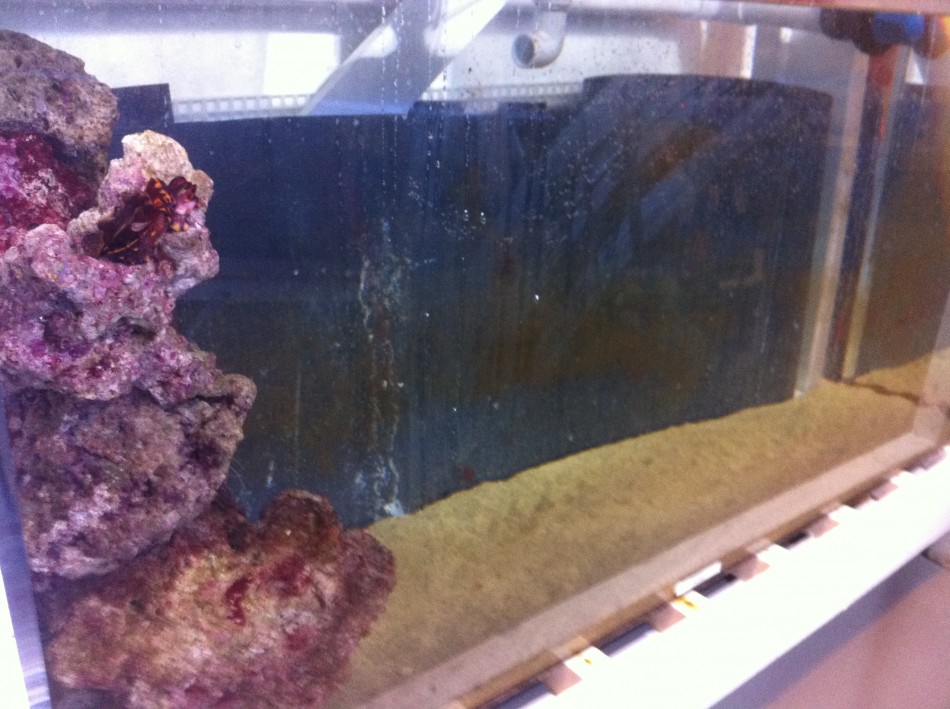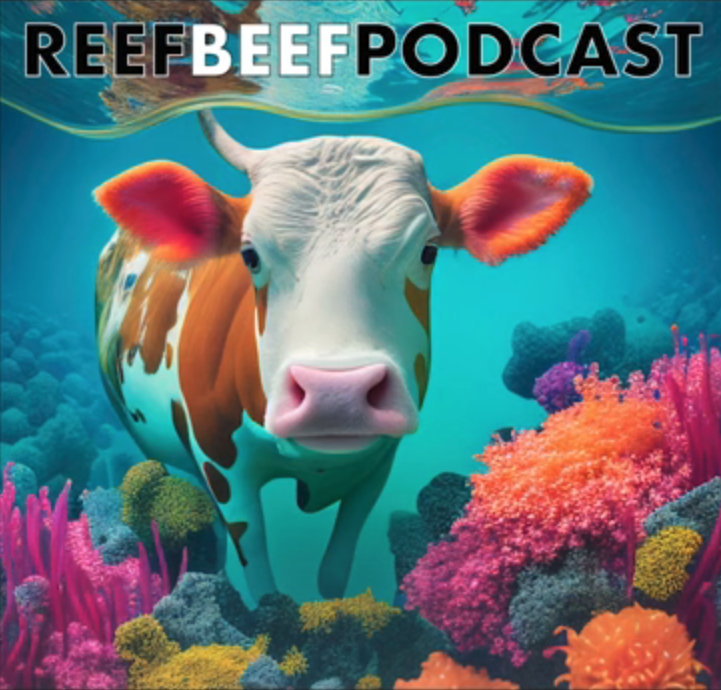From Advanced Aquarist
http://vimeo.com/32478147
We shot this video last week, and even though the footage is shaky, and made slightly more so in the 60’s editing style, it still shows some pretty amazing behaviors of one of the most fascinating of all the fascinating cuttlefish, Metasepia sp. This female balances on arm tips, walks on all fours (the rear legs being articulated fleshy appendages) and, most exciting to me, hunts by aiming its two feeding tentacles in different directions. This female, and two males, are currently on display at the Steinhart Aquarium in the California Academy of Sciences, where they are mating and laying eggs regularly.
In the wild these animals are often found ‘walking’ across sand flats or much habitats away from any cover, where it has been thought they live most of their lives protected from predation by their apparently toxic flesh, flashing their flamboyant colors as a warning – don’t eat me, I am bad for your digestion. However, some recent observations lead me to want to question where these animals may actually be spending their time. Atlantis Marine World in New York has been incredibly successful at raising these animals and recently shipped 10 juveniles to the Steinhart aquarium where they are being kept behind the scenes. In their holding tank, and in the holding tank of one adult male, there is a literal wall of rock against the sides of the tanks for biological filtration, and the cuttles spend most of their time in, around, and on this rock and not on the large area of open sand. This behavior is more consistent in the adult male, who over the past month, has rarely been seen on the sand. Last summer while on an Academy expedition in the Philippines, we saw only one Metasepia on the sand, but that sand was in the surrounded by rocky reef, so it just might be the case that these hard to find animals are actually hiding in and around the reefscape. It is important to make clear that this is speculation and that hopefully more observation of these animals both in captivity and in the wild will help to yield more information about these amazing animals.

Even experienced ceph keepers with mature tanks should think long and hard before obtaining this species. Their needs are resource intensive, specific, and not yet fully understood. Perhaps more importantly, the size and health of their wild populations is unknown.
Even the sharing of information, photos and video of these animals can be controversial. Some fear that detailed information and attractive photos may encourage inexperienced saltwater aquarists to obtain specimens. Personally, I believe that knowledge should be freely available, rather than hidden from view. I also believe that the admiration of a species can be of benefit to its preservation in the wild rather than its detriment. Furthermore, it is my hope that the information on the site will empower aquarists to make sound, rational decisions regarding the advisability of keeping these very difficult animals.
For more information check out this article, this article, and of course the site for all things cephy TONMO.com
